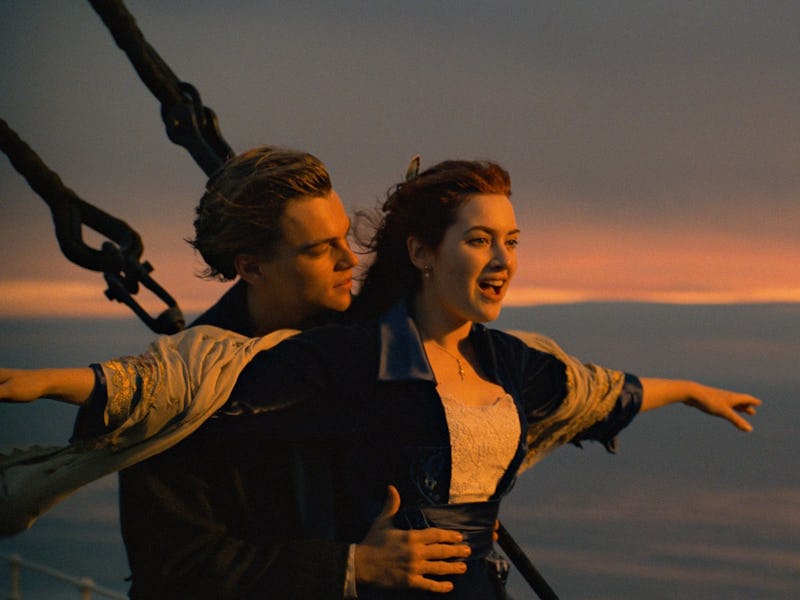James Cameron’s Greatest Epic Has Withstood the Test of Time
We'll never let go.

When James Cameron set about to make Titanic, he was, ahem, the king of the world. He had two all-timer sci-fi franchises under his belt, and had just wrapped a successful action-comedy starring Arnold Schwarzenegger at the peak of his career. But when Cameron presented 20th Century Fox executives with the idea for a film about the Titanic, he was faced with skepticism. A romantic drama on board the most famous shipwreck in history? Sounds like a snooze!
But Cameron was insistent, and his reputation was so pristine that Titanic received the green light. And thus Cameron embarked on his most expensive production yet.
Titanic should have been as much of a disaster as the shipwreck that inspired it. The two stars were a heartthrob attempting to escape his Tiger Beat image and an unknown British actress. The shoot was a taxing experience that cemented Cameron’s reputation as “the scariest man in Hollywood.” There were broken bones, drug scandals, near-drownings, and the terrorizing of poor Kate Winslet. Titanic was over-budget and over-schedule. But then it opened in theaters and became the highest-grossing movie in history.
The brilliance of Titanic lies in its two-part structure. As those who watched the movie over and over on the two-VHS tape set know well, it’s half a doomed romance and half a disaster movie. This ingenious combination allowed Titanic to be the elusive four-quadrant hit that appeals to every demographic, but the combination also helps Titanic withstand the test of time.
The story of Jack (Leonardo DiCaprio) and Rose (Winslet) falling in love despite their class differences, freeing Rose from her repressed upper-class existence, was timeless and told with an earnestness that escapes most modern blockbusters. Like yesteryear’s Hollywood epics, Titanic wasn’t afraid to tap into the story’s melodrama. It delivered a love story so achingly sincere and swooningly romantic that even the most cynical viewer could feel their heart melt a little. That it also provided a little tasteful nudity and a famously steamy sex scene didn’t hurt either.
The Titanic sinks.
Cameron approaches the back half of the film with the same sincerity. The scope of the sinking sequence remains awe-inspiring, but it holds up because the sinking plays as a mini-movie with its own character arcs, story beats, and climaxes. Jack and Rose are the central narrative thread, but the second half is populated with equally compelling stories: the captain (Bernard Hill) attempting to salvage the disaster, the ship’s designer (Victor Garber) reckoning with his hubris, and Billy Zane trying to find that damn diamond. Cameron’s expert filmmaking is complemented by his pitch-perfect storytelling, which immerses you in the film until it becomes more than a movie. Titanic is an experience.
Few movies today operate on the level of Titanic — epic in its scope, intimate in its emotional beats, and just simply awesome. That’s why it keeps its crown as one of the most successful movies of all time, and why Cameron remains the undisputed king of the blockbuster.
Titanic is streaming on Netflix.
This article was originally published on